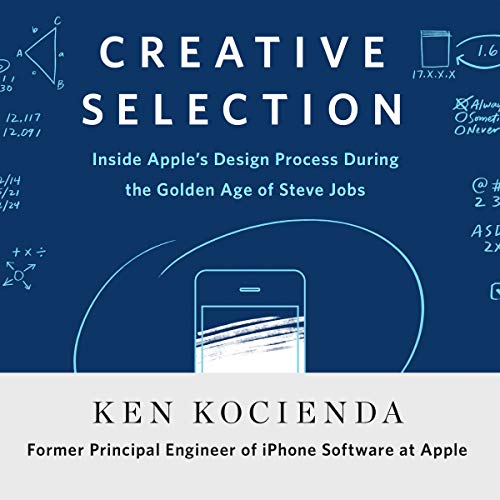Creative Selection - Ken Kocienda

Creative Selection is written by Ken Kocienda who worked at Apple from 2001 to 2017. He is the co-founder of Safari and leaded the iPhone and iPad keyboard design, which is basically the most user-facing software of Apple first phones.
Apple Design Process
This book is about the design process at Apple, “during the Golden Age of Steve Jobs”. Many great examples illustrate it.
Demo driven
At Apple, the engineers work a lot around demos. They are making demos on a regular basis to their peers and managers. The goal of these demos is to validate assumptions and get positive and negative feedback.
Basically the process detailed by Kocienda is:
An idea of product is proposed
A small group (ex: 3 for Safari) of engineers works to produce a proof of concept of the main problem to tackle during the first weeks
If the demo shows that the project can be done, the team keeps iterating in this idea <> poc / demo <> development cycle. As the product grows, the team is made bigger until the project is ready for production
Demos are really in the center of this process. For example, during iPhone Software early development, the keyboard was judged really hard to use during a demo by a manager of the engineer team. The keys were too small to have an accurate typing, and therefore a correct experience using the device. The manager suspended all the projects of iPhone software and told every engineer to design a keyboard individually and propose it at the next demo session. => if something ruins the overall ux of the product, stop everything and focus on it.
Heusistics and Algorithms
Apple engineers implement a lot of algorithms to make the Software the most accurate and optimized possible. But they also use a lot of heuristics / personal taste decision.
To choose a color they don’t do a lot of A/B testing, like Google with their 50 shades of blue experiment. Instead they trust their sense of taste.
Software understands and corrects User mistakes
The iPhone goal was to be simple to use. To do so, they used a lot of techniques to deal with “user mistakes”.
For example the point of impact of a finger on a phone is not the tip, it is actually lower than that. But the software modifies the touch points to account for this difference.
The first iPhone had a small screen, this caused the user to make typing mistakes as the keyboard keys were quite small. A big part of the book describes all the design phase of an autocorrection system that corrects the user typing mistakes without him even noticing he made some.
Software feels simple when it understands and corrects user mistakes.
Secret culture
Apple project are described as quite independent and closed. Only the people working on the iPhone knew that this project existed, same for other products made in the company. When employees move from project to project, they sign a new NDA and work in small teams at first.